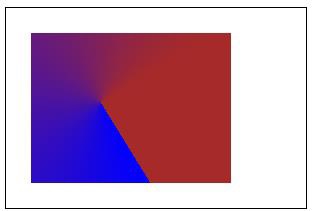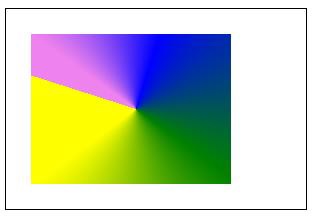
- HTML Canvas - Home
- HTML Canvas - Introduction
- Environmental Setup
- HTML Canvas - First Application
- HTML Canvas - Drawing 2D Shapes
- HTML Canvas - Path Elements
- 2D Shapes Using Path Elements
- HTML Canvas - Colors
- HTML Canvas - Adding Styles
- HTML Canvas - Adding Text
- HTML Canvas - Adding Images
- HTML Canvas - Canvas Clock
- HTML Canvas - Transformations
- Composting and Clipping
- HTML Canvas - Basic Animations
- Advanced Animations
- HTML Canvas API Functions
- HTML Canvas - Element
- HTML Canvas - Rectangles
- HTML Canvas - Lines
- HTML Canvas - Paths
- HTML Canvas - Text
- HTML Canvas - Colors and Styles
- HTML Canvas - Images
- HTML Canvas - Shadows and Transformations
- HTML Canvas Useful Resources
- HTML Canvas - Quick Guide
- HTML Canvas - Useful Resources
- HTML Canvas - Discussion
HTML Canvas - createConicGradient() Method
The HTML Canvas createConicGradient() method can be used to create a gradient around the point for the given co-ordinates.
Syntax
Following is the syntax of HTML Canvas createConicGradient() method −
CanvasRenderingContext2D.createConicGradient(angle, x, y);
Parameters
Following is the list of parameters of this method −
| S.No | Parameter & Description |
|---|---|
| 1 |
angle The angle at which gradient is to be drawn on the Canvas shape. The passed angle is based on clockwise rotation only. |
| 2 |
x The x co-ordinate of the gradient center. |
| 3 |
y The y co-ordinate of the gradient center. |
Return value
Conic gradient is applied to the context inside the Canvas element and is rendered.
Example 1
The following gradient draws a simple conic gradient to the rectangle drawn inside the Canvas element using HTML Canvas createConicGradient() method.
<!DOCTYPE html>
<html lang="en">
<head>
<title>Reference API</title>
<style>
body {
margin: 10px;
padding: 10px;
}
</style>
</head>
<body>
<canvas id="canvas" width="300" height="200" style="border: 1px solid black;"></canvas>
<script>
var canvas = document.getElementById('canvas');
var context = canvas.getContext('2d');
var congradient = context.createConicGradient(45, 95, 95);
congradient.addColorStop(0, 'blue');
congradient.addColorStop(0.75, 'brown');
context.fillStyle = congradient;
context.fillRect(25, 25, 200, 150);
</script>
</body>
</html>
Output
The output returned by the above code on the webpage as −

Example 2
The following example draws a conic gradient pattern onto the Canvas element by calling the method createConicGradient().
<!DOCTYPE html>
<html lang="en">
<head>
<title>Reference API</title>
<style>
body {
margin: 10px;
padding: 10px;
}
</style>
</head>
<body>
<canvas id="canvas" width="300" height="200" style="border: 1px solid black;"></canvas>
<script>
var canvas = document.getElementById('canvas');
var context = canvas.getContext('2d');
var congradient = context.createConicGradient(60, 130, 100);
congradient.addColorStop(0.05, 'violet');
congradient.addColorStop(0.25, 'blue');
congradient.addColorStop(0.55, 'green');
congradient.addColorStop(0.85, 'yellow');
context.fillStyle = congradient;
context.fillRect(25, 25, 200, 150);
</script>
</body>
</html>
Output
The output returned by the above code on the webpage as −
